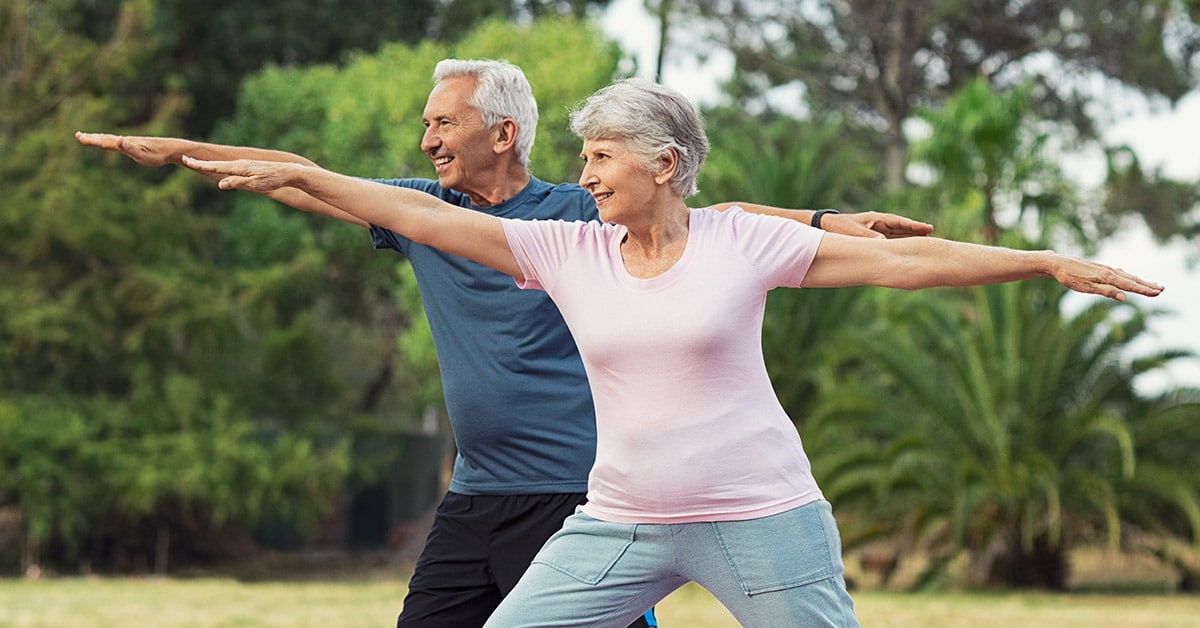Growing older is a gift—but stiff joints, weak muscles, and sluggish energy don’t have to be part of the package. The real secret? Keep your body moving in ways that build strength and encourage flexibility. A balanced routine helps you stand taller, move easier, and stay independent for the long haul. Below you’ll find 12 simple exercises—six for strength, six for flexibility—that team up to slow the clock and keep you feeling young. No fancy gear required, just a chair, a mat, and about 20 minutes of your day.
Why combine strength and flexibility?
Strength training builds muscle, bone density, and metabolism. Flexibility work keeps joints mobile, posture upright, and everyday tasks pain-free. Together, they help you:
- Protect bones and joints
- Boost balance and cut fall risk
- Ease back or neck pain caused by tight muscles
- Maintain healthy weight with a faster resting burn
Ready? Let’s dive in.
Part 1: Six strength moves (2–3 sets of 8–12 reps each)
1. Sit-to-Stand Chair Squats
What it does
Strengthens glutes, quads, and core—key for climbing stairs and getting off the couch.
How to do it
Sit tall near the edge of a sturdy chair. Feet hip-width. Lean forward slightly, press through heels, and stand. Lower with control until your hips tap the seat. Avoid using hands unless needed for balance.
2. Wall Push-Ups
What it does
Works chest, shoulders, and triceps without floor stress.
How to do it
Stand arm’s length from a wall. Hands at shoulder height, slightly wider than shoulders. Bend elbows and bring chest toward the wall. Press back. Step feet farther for more challenge.
3. Standing Hip Abductions
What it does
Builds outer-hip muscles for better balance and knee support.
How to do it
Hold the back of a chair. Shift weight to one leg. Lift the other leg out to the side without tilting torso. Lower with control. Switch legs.
4. Bent-Over Backpack Rows
What it does
Strengthens upper back to fight rounded-shoulder posture.
How to do it
Fill a backpack with books. Hinge forward at hips, back flat, knees soft. Hold straps, pull elbows up toward ribs, squeeze shoulder blades, and lower slow.
5. Glute Bridges
What it does
Targets backside muscles that protect the lower back.
How to do it
Lie on your back, knees bent, feet flat. Press through heels, squeeze glutes, and lift hips until body forms a line from shoulders to knees. Pause, then lower.
6. Farmer’s Carry
What it does
Builds grip, core, and total-body stability.
How to do it
Hold a weight (dumbbell, water jug) in each hand. Stand tall, shoulders back, and walk 30–60 seconds without leaning. Rest and repeat.
Part 2: Six flexibility moves (hold each 20–30 seconds, 2 rounds)
7. Cat-Cow Spine Flow
What it does
Mobilizes the entire spine, easing stiffness.
How to do it
On hands and knees, inhale and arch back (cow). Exhale, round spine (cat). Move slowly with breath.
8. Chest Opener in Doorway
What it does
Releases tight chest muscles from hours of sitting or phone use.
How to do it
Place forearms on doorframe at shoulder height. Step one foot forward and gently lean until you feel a stretch across the chest. Switch legs for second hold.
9. Seated Figure-Four Hip Stretch
What it does
Loosens outer hips and can ease lower-back tension.
How to do it
Sit tall. Cross right ankle over left thigh. Flex right foot and hinge forward. Repeat other side.
10. Standing Calf Stretch
What it does
Keeps ankles mobile and stride natural.
How to do it
Face wall. Step one foot back, heel down, toes forward. Lean into front knee until stretch hits back-leg calf. Switch.
11. Supine Knee-to-Chest
What it does
Gently lengthens lower-back muscles.
How to do it
Lie on back. Hug one knee toward chest, keeping other leg long. Breathe into low back. Switch.
12. Neck Side Stretch
What it does
Relieves neck tension from computer work.
How to do it
Sit or stand tall. Gently tilt right ear toward right shoulder, use right hand for light pressure. Keep shoulders relaxed. Switch.
Putting it all together
Weekly plan
Mon/Wed/Fri: strength section + three flexibility moves
Tue/Thu/Sat: flexibility section + a brisk 20-minute walk
Sun: full rest or gentle yoga
Progress tips
- Add small weights or resistance bands as strength improves.
- For flexibility, breathe slowly and avoid bouncing.
- Track how many chair squats or wall push-ups you can do; celebrate small wins.
Final thoughts
Ageing is inevitable. Feeling fragile is optional. By mixing these 12 exercises into your week, you’ll keep muscles strong, joints mobile, and everyday life a lot easier. Consistency beats intensity—focus on showing up, moving well, and enjoying the process. Your future self will thank you.










